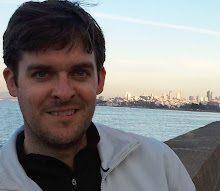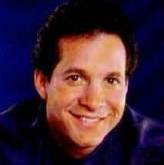Since when did the James Bond film have to become so thoroughly transmogrified and exchange its trademark elegance for a testosterone-fueled, mainstream entertainment? The world is changing, no doubt about it. And so is Bond. This Bond in particular. He’s even traded in his Walther PPK for a UMP submachine gun. And pray tell, where is the classic gun barrel shot opening and why has it moved to the completion of the film?
The highly lucrative film canon, which once had a flair for the fantastic - - where megalomaniacal super villains and their trusty henchmen (often similar in stature to their employer, no pair best represents this amalgam in the series than the opulent Auric Goldfinger and his substantially muscular right-arm, Oddjob) whose overzealousness lead to their eventual and often times humorous comeuppance whilst pitting Bond against imaginable odds amidst extraordinary, often-times bizarre set-pieces complements of the great Ken Adam - - is not only becoming more real, but less fantastic.
The popularity of author Ian Flemings’ novels and producers Broccolis’/Saltzmans’ films is pervasive. In addition to being the highest grossing film franchise of all time (as of this review), Flemings’ best sellers are world-renowned; at once receiving their largest boost in sales after President John F. Kennedy included “From Russia With Love” in his top-ten favorite book list (which is also cited as the last film he saw before his untimely assassination). The archetypal Bond films were the vestiges of not only grandiose action and campy magnificence, but of entertainment on a par with that of a male romance novel. QUANTUM OF SOLACE is not that Bond film. Ironically, however, Daniel Craig captures the essence of this Bond. Craig exudes a darker side to Bond than Dalton did and is as cool and confident as Connery, admittedly the best of the Bonds. Regrettably, his go-round as Bond in QUANTUM OF SOLACE can’t hold a candle to his performance given in CASINO ROYALE. In the latter film, there was a sense of urgency in his actions and an overwhelming feeling of dread and excitement that pulsated throughout the piece. The parkour chase alone in Madagascar was worth the price of admission and showed a side of Bond that was intensely agile and skilled in his movements, the likes of which we hadn’t seen before. Perhaps, we never will again.
The problem in ‘Quantum’ is that there is no control over the action and the direction of its moving parts - - and how they move! The popular “crash cutting” editing technique adopted by Peter Hunt in the earlier films which heightened the intensity of the action without becoming disconcerting, here, is an exercise in frustration-management. And whereas the cinematography of the recent CLOVERFIELD, for instance, is a fitting example of a camera-in-a-blender (not a positive tribute), QUANTUM OF SOLACE employs a splicer-on-steroids approach thereby sacrificing patience in action for so many throwaway postmodern action film clichés. Typically, Bond films borrow their titles (as ‘Quantum’ did) from amongst the collection of (14) Ian Fleming novels (save for such contemporary film entries as DIE ANOTHER DAY, TOMORROW NEVER DIES or THE WORLD IS NOT ENOUGH [although the latter title is a phrase referenced in Fleming’s book and film on which it's based, ON HER MAJESTY’S SECRET SERVICE]), but perhaps the producers should have looked instead to Grace Jones’ moniker in A VIEW TO A KILL for a more appropriate description of the film’s accumulated efforts: ‘May Day’. Another distraction is the film's excessive use of elaborately-designed location title cards which unintentionally compartmentalize the various sequences of the film - - a simple, old-fashioned, white graphic would have sufficed - - that is, unless the audience can figure it out without the cinematic hand-holding that so many filmmakers think is necessary. As I recall, a handful of the location titles were more attractive than the scenes they were introducing.
‘Quantum’ continues where CASINO ROYALE left off: with Bond escorting a Quantum (a contemporized version of SMERSH or SPECTRE) Senior agent, Mr. White (a kind of Ernst Stavro Blofeld-in-training) to a hidden interrogation facility in the bowels of Siena, Italy. This takes place moments after Bond dodges a thunderous shower storm of rapid machine-gun fire reminiscent of Jerry Bruckheimer’s standard of cinematic fare which is often just as impossible to discern who is the hunter and who is the hunted all the while showing no compassion for innocent bystanders, construction workers or fellow drivers sharing the road with Bond. Bruckheimer’s / Bay’s THE ROCK, however, exhibited more subtlety and is one of the crowning achievements of contemporary action cinema - - but I digress. The interrogation goes awry when the bodyguard of Bond’s superior, M (the increasingly unimaginative Dame Judi Dench)
turns out to be a Quantum double-agent, fires a few rounds of lead into M and a few members of the MI6 making it possible for White to escape. What follows is the second of at least a half dozen chase sequences (the first of which resembles a scene out of Cirque du Soleil’s KÀ, but in extreme close-up) where you can’t tell Bond from the traitor, Mitchell, as both are handsomely tailored in dark suits and packing similar looking side arms. It was at this point in the film that the editing nearly put me in a state of nausea. Their struggle is intercut with Il Palio (held only twice each year, it serendipitously occurs during Bond’s fight through the luscious streets of Siena) and after a few close shaves, * spoiler ahead * Bond kills him. Within moments, M has recovered, Mr. White has vanished and Bond is back in England at Universal Exports where his colleagues discover a connection to Mitchell in Haiti.
It is in Haiti where we’re introduced to the first of the pair of the film’s Bond Girls (no, not M), Camille Montes (perhaps a crack at her supple breasts or from the Spanish phrase ‘to mount’), whom Bond learns is the object of assassination by her lover and the film’s (ghey) nemesis, Dominic Greene, head of the ecological organization, Greene Planet, a faux 501(c)(3) on Quantum’s payroll. After careful deliberation of his onscreen presence, delivery of speech and slaphappy fighting style, there is no threat to be found in Mathieu Amalric’s performance as Greene. He exhibits an air of flamboyance (if you want to call that a positive character trait; although Klaus Maria Brandauer who played Largo in the splendid NEVER SAY NEVER AGAIN, is not only one of the more flamboyant of the Bond villains, but radiates a humanism and menace rarely found in an opponent to the MI6) but there is nothing tangible about Amalric’s portrayal of a corrupt eco-terrorist - - nor his stronghold. These days, villains such as these no longer work out of undersea super structures, penthouse suites in Las Vegas or interstellar space stations - - they do so in ramshackle warehouses with a chain link fence (in its defense, there is a security camera - - but I wonder if there’s a fresh supply of tape in the recorder). Le Chiffre should’ve played a better hand at Casino Royale as Quantum must be desperate for decent square footage in the terrorist residential market. Nevertheless, Bond discovers that Greene is in cahoots with Bolivian General Medrano who plans to stage a coup d’etat in exchange for a large portion of desert in Bolivia and after a noisy, yet uninteresting boat chase (FROM RUSSIA WITH LOVE, anyone?), Bond rescues Camille from Medrano and Greene’s clutches.
Is it just me, or is the triumvirate of Bond, Greene and Montes reminiscent of Bond, Largo and Domino in THUNDERBALL / NEVER SAY NEVER AGAIN? Ever since the release of DR. NO, Bond films were always guilty of lifting imagery from or paying homage to the films which preceded them. The most obvious homage in ‘Quantum’ is when … oh, we’ll get to that later.
After the seafaring debacle, Bond conveniently catches up to Greene who meets with CIA agents Beam and Felix Leiter (an unfortunate and disappointing throwaway performance by Jeffrey Wright) to trade U.S. support of Medrano’s overthrow for Bolivian petroleum and the removal
of Bond from the equation. Agent Beam does the talking and accepts the terms … while Leiter just sits … and libates. At that moment, I missed Jack Lord (the first incarnation of Leiter) - - and good screenwriting. Never has Felix looked so much like an extra as opposed to a character offering support. Throughout the film, his actions are listless, lackadaisical and he repeatedly engages in the drink.
In the film’s next and most striking sequence, Quantum associates partake in a conference during a performance of Puccini’s opera, Tosca, from their respective seats with the assistance of concealed earpieces. The filmmakers have cleverly taken the model of SPECTRE’s static boardroom-style meeting in THUNDERBALL and contemporized it against the backdrop (or rather, in front of the stage) of operatic violence and music with Bond interrupting the meeting and taking over as moderator, literally, from the wings.
Relinquishing with any and all potential tutorials from Q (or a Q-like replacement in the film), Bond is able to snap a few pictures with the help of his cellular phone with the speed and clarity that just about anyone in the natural world can attain on a handheld PDA nowadays if suited with a mighty graphics display and memory card. Sadly, it seems that Q’s department officially appears obsolete in the modern-day Bond landscape (or else it has felt the pinch of the current economic crisis like the rest of us and the executive stakeholders in the MI6 decided to do away with the department). Lucius Fox (of THE DARK KNIGHT's Applied Sciences division of Wayne Enterprises) never got that memo and continues to produce a wide array of techno-gadgetry for the contemporary Batman universe - - which doesn't seem to be hurting the franchise. THE DARK KNIGHT, a film which manages to transcend the 'comic-book' genre, utilizes this element to a great degree to enhance the tools that Batman carries on his utility belt just as Bond used to rely on in his Aston Martin DB5 or in more compact devices such as a wristwatch. By sacrificing this element of fancy (and Q-Branch altogether), this is just one of several examples why the current Bond film is crossing the threshold of a new reality, which may not be such a good thing for aficionados of the series.
Another clumsily staged gunfight follows where Bond is framed (Greene actually pulls the trigger) for killing the bodyguard of Guy Haines - - a nod to Hitchcock? - - a direct advisor to the British PM. Upon hearing the devastating news, M (the dominatrix / mother figure she so dutifully plays in her sixth turn as Bond’s Department Director) voids all of 007’s travel papers and credit cards in an attempt to force him (the wrong man) back to London.
Bond manages to slip through his department’s clutches (what a surprise!?) and hooks up with his former ally from CASINO ROYALE, the treacherous, Renee Mathis. Their brief meeting proves fruitful (although not for Mathis, as he is eventually and unceremoniously killed by Bolivian policemen) in that he urges Bond to forgive Vesper Lynd (his favorite martini’s namesake) for her seemingly corrupt behavior and that she was a pawn in Quantum’s plan for worldwide domination. That doesn’t
stop Bond from meeting and daftly seducing the second of the films’ Bond Girls, Strawberry Fields - - a comical reference to the popular Beatles’ song (the musical group Bond scoffed at in GOLDFINGER) and for the fact of her having red hair, perhaps it is an insensitive crack at how her drapes match her carpet. Much like Jill Masterson in GOLDFINGER, Fields has about six minutes of screen time (and apparently was born with as many fingers on each hand) before she is covered in - - not gold, but - - petroleum, in an identical pose to the aforementioned Masterson as she hauntingly drips ‘black gold’ from her limbs atop the bed where Bond besieged her. The film's director, Marc Forster is quoted as saying that he believes “oil is the new gold.” Not only is gold losing its value in the contemporary real-life marketplace, but so is the once apparent element of fantasy in the Bond film.
We then move from borrowed plot concepts from GOLDFINGER to GOLDENEYE (and others in the series) as Bond and Montes scout around Greene’s desert real estate (much like Bond and Simonova did in the latter film when they searched for Trevelyan’s satellite dish in Cuba; and when Bond and Leiter scoured over Nassau for the hijacked Vulcan in THUNDERBALL; or when Bond and Kissy Suzuki stumbled upon SPECTRE’s hidden rocket base in a hollowed-out volcano in YOU ONLY LIVE TWICE). After commandeering a Douglas DC-3 in which they are eventually shot down by lethal Quantum agents in winged pursuit - - and Bond unexpectedly bellows a most startling howl - - he risks an indefinite suspension of his pilot’s license when the aircraft excoriates its steel in midair and both Bond and Montes parachute to safety directly into a sinkhole … incidentally, while sharing one parachute (!).
Taking their first quiet moment together (when most practical people would have probably had a nervous breakdown after undergoing such a life-altering experience) since the crash, Camille reveals that Greene’s colleague, Medrano, raped and murdered members of her family (in subtle - - she may have instead been reciting her grocery list - - yet graphic detail) and Bond attempts to trump her story by reminiscing over his double-crossing ex-lover, Vesper. Revenge is on both of their minds and sex is sacrificed for a few moments of grieving (yawn). Montes should’ve taken notes from Honey Ryder (DR. NO) whose tale of bereavement was far more compelling. Little do they both know that they’ve stumbled into a convenient plot (sink) hole where they not only learn of Quantum’s overall scheme, but one of the series’ most irrelevant: that Quantum, with Greene as its executor, is damming water beneath the Bolivian desert. Remember when the deliciously insidious Dr. No was toppling rockets that were attempting to penetrate space; and the ever-persistent Ernst Stavro Blofeld held the superpowers of the world hostage with his diamond-studded death ray from outer space; and media magnate, the Hearst-like Elliot Carver, fashioned the News for his own means to provoke widespread war between nations? Compared to the prior arch-villains of Bond, Dominic Greene and his strategy for worldwide domination can be likened to the pop and fizzle in a party favor.
So it's no surprise that when Bond eventually engages in hand-to-hand combat with Greene in his hydrogen fuel cell-powered hotel (eco-friendly, yes, although no safety commissioner in his right mind would give the project a green light - - but, it's a welcomed departure into the fantasy, so I approve), Greene grunts and whimpers as if he's trying to move his bowels.
Their tussle amidst the crumbling and exploding hotel complex is reminiscent of the full-scale assault inside of Stromberg's steel leviathan in THE SPY WHO LOVED ME sparing the expense of several hundred extras in color-coordinated jumpsuits armed with rapid-fire machine guns and hand grenades. Similarly, both 'strongholds' are destroyed, but not before Camille takes down Medrano (yawn) on another floor of the doomed resort. When Domino destroyed Largo with a harpoon gun back in '65, it was far more impactful and left a lasting impression on the senses (both visually and auditorially) - - much like a harpoon does when it penetrates a human spine. Bond brings Greene to justice and learns all there is to know about Quantum. Too bad it was done off camera, which leaves open another opportunity for yet another sequel. Bond strands Greene in the desert with a can of motor oil and some bad karma who is later found (mysteriously) shot dead with the black gold settled in his stomach. Perhaps it was the specter of Strawberry Fields who was responsible?
Bond takes what intelligence he has gathered from Greene to Russia where he meets another link in the Quantum chain, Yusef, who (get this) takes advantage of high-ranking members of the opposite sex for their government secrets in addition to being Vesper's former lover. Bond exacts his revenge and leaves him alive to be interrogated by M, thereby dealing with the quantum of his solace (if not a small part of it); we learn from M that Leiter has been promoted at the CIA (which may only cause him to drink even more) and Bond's status as an agent is confirmed. Martinis all around?!
The quantum of solace I expect I'll require after leaving the theatre is very high unlike the expectations I have for the film's next installment. Bond was fine just the way he was. The world, with all its logistics and complexities, will always be changing, but it must take a special kind of filmmaker and enthusiast of the Bond universe to understand that for a film of this caliber to work, Bond doesn't have to change with it. Bond is a lifestyle and his career as a secret agent shapes his destiny. As an agent par excellence, he is always (obviously) in training and so adjusts with his changing environments and against his respective foes without sacrifice (as I'm certain that Ian Fleming intended) - - but for what, in this new age, is Bond in training?







